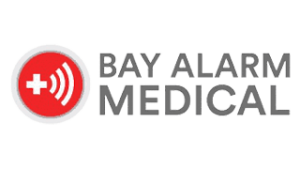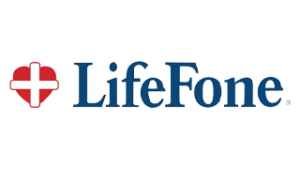Why We Love It
HandsFree Health is one of the most unique medical alerts on the market. Unlike traditional medical alert systems that pair wearable help buttons with an in-home base unit, HandsFree Health pairs help buttons with a smart speaker with two-way communication. The WellBe Smart Speaker can make calls through its speaker, answer your health questions, track your blood pressure—it can even chat with users to help them feel less isolated and lonely. These features are rarely found in a medical alert system, which is why we named HandsFree Health, “Best Advanced Features.”
No other single device on this list offers as many advanced features as the WellBe speaker. Here are a few of our favorites:
- Two-way calling
- Medication and appointment reminders
- Family/caregiver notifications
- Answer health questions
- Track health metrics (blood pressure, glucose, etc.)
- Play music and audiobooks
- Chat with users
- Report weather and news
We love the range of features, and the fact that the speaker is voice-activated. The speaker uses voice recognition for up to six users to identify who’s speaking. You activate the speaker by simply saying, “Ok, WellBe.” The speaker itself doesn’t have automatic fall detection—you’ll need to bundle the speaker with the fall detection pendant, which costs $39.95 per month, plus $10 per month for fall detection. And that doesn’t include the one-time equipment fee of $189.95 for the speaker and pendant. That makes it one of the most expensive devices on this list.
Despite the higher cost, the fall detection pendant and speaker both did well in fall detection testing. Like most companies on this list, the devices struggled to identify slow falls (slower falls from a seated position). When we spoke with HandsFree Health customer support, they told us that WellBe fall detection is only designed to identify fast falls to limit the amount of false alarms. But WellBe did identify all fast falls and successfully connected us to the monitoring center.
What is fall detection?
Fall detection (also called automatic fall detection) is a feature in medical alert systems that identify when you fall and automatically contact the monitoring center for help. The idea is fall detection calls for help when you’ve been knocked unconscious from a fall.
Fall detection devices use a mixture of sensors and algorithms to identify when you’ve fallen. Of course, these devices are fallible and not 100% accurate. Basically every company cautions that no device is 100% accurate, so many fall alert devices include a help button as well in case the device doesn’t record your fall.
How does fall detection work?
Fall detection uses a combination of different sensors to collect data as you move. Sensors record data on acceleration, changes in air pressure, and more, then feed that data into an algorithm, which determines whether a fall happened. If it determines a fall did occur, the device triggers an automatic call to the monitoring center. Some devices may also alert caregiver or emergency contacts that they registered a fall.
Is fall detection accurate?
Yes, fall detection is accurate, but it’s not infallible.
Fall detection is anywhere between 81%–97% accurate, according to research, but rates can vary based on the type of device, how the device is worn (as a necklace, on the wrist, etc.), and more.
In general, fall detection is most accurate when worn on the chest. And although many companies offer smartwatches with fall detection, research suggests that those devices are less accurate.
If you’re worried about false alarms, don’t be: Medical alert companies expect and encourage you to test fall detection regularly. Simply say, “I’m just testing” when the device calls the monitoring center.
How much do medical alert systems with fall detection cost?
Medical alert systems with fall detection usually cost about $20–$35 per month, plus a monthly fall detection fee of $5–$10.
Don’t forget that some companies will charge one-time equipment fees ranging from $150–$200.
Why is fall detection important?
Fall detection is one of the most important features of a medical alert system after monitoring center response time. That’s because it addresses one of the biggest blindspots in medical alert systems: getting help when you’ve been knocked unconscious or are otherwise incapacitated.
Standard medical alert systems require action on your part—pressing a button, saying a prompt into a speaker—to get help. Automatic fall detection requires no effort on your part.
Fall detection can get you help quicker and prevent a “long lie.” Long lies are when someone falls and is unable to get up for an extended period of time, usually more than one hour. Long lies are linked to dehydration, pressure injuries, muscle and tissue damage, psychological harm, limited mobility, becoming dependent, and a drop in quality of life. Although researchers need more data, it’s clear that long lies come with a host of negative consequences, and there may be a link between how long you lie and how quickly you can recover.
By using a reliable medical alert system with fall detection, you can not only get help quicker but potentially recover from your fall quicker. That means you’ll get back to being active and feeling confident faster.




